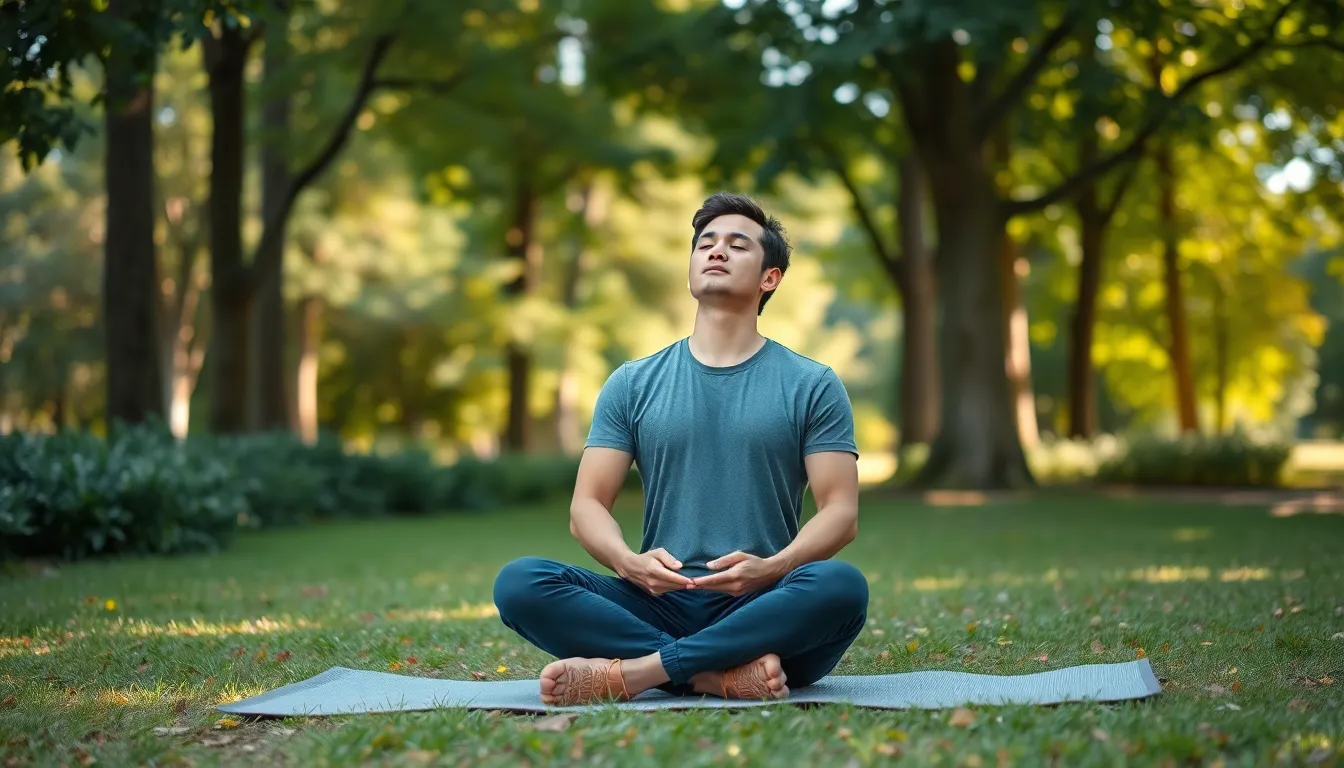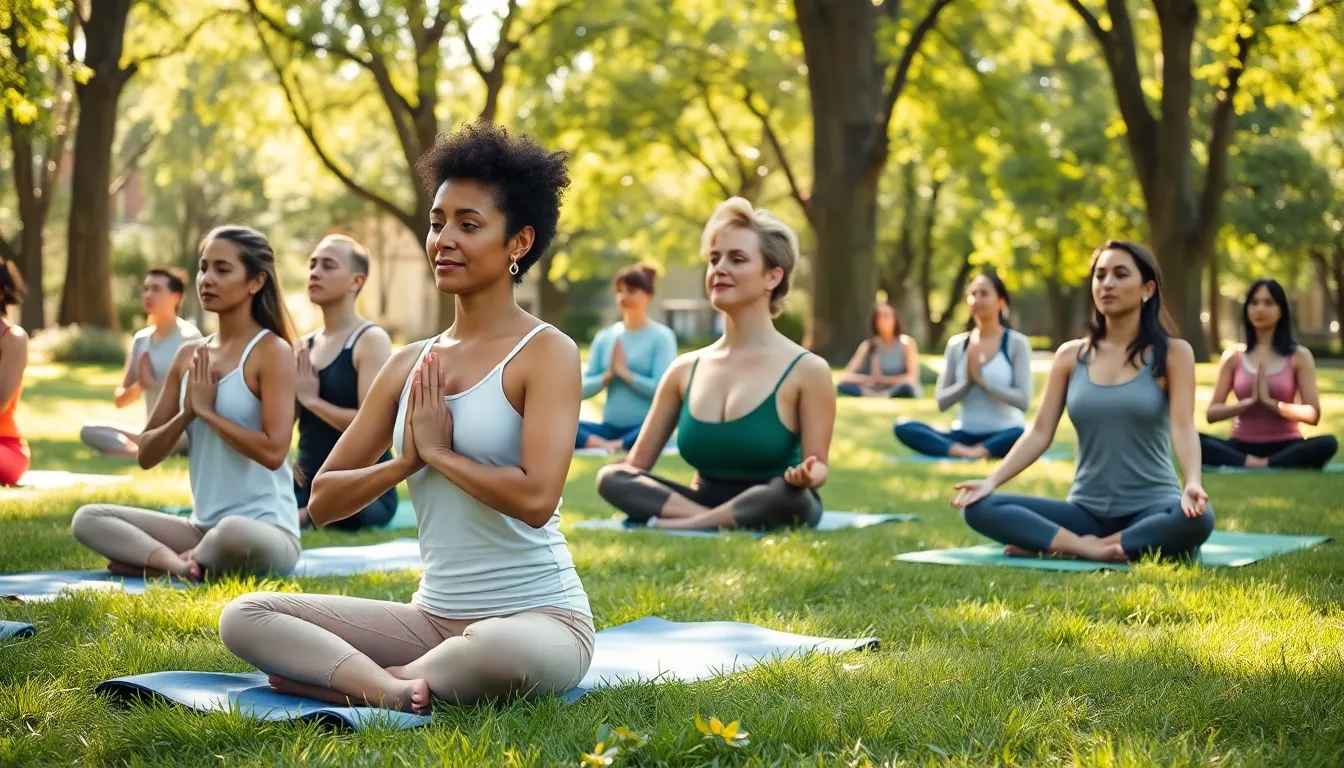In today’s fast-paced world, it’s easy to feel like a hamster on a wheel—running but getting nowhere. Enter the concept of “mindfulness first,” a refreshing approach that encourages individuals to pause, breathe, and actually enjoy the ride. Imagine starting your day with a clear mind instead of a caffeine-fueled frenzy; it sounds dreamy, right?
mindfulness first
Mindfulness first emphasizes taking a moment for oneself amid daily chaos. This practice centers on awareness and presence in each moment.
Definition of Mindfulness
Mindfulness refers to maintaining awareness of thoughts, feelings, and surroundings without judgment. It cultivates a state of mental clarity and emotional stability. Individuals practice mindfulness through various techniques, such as meditation, deep breathing, and mindful observation. Research shows that regular mindfulness practice enhances focus, reduces stress and improves overall well-being.
The Concept of “Mindfulness First”
The concept of mindfulness first encourages prioritizing mindful moments before engaging in daily activities. Starting the day with an intentional pause fosters a clearer mindset. Individuals focusing on this approach often experience improved decision-making and better emotional responses. This practice contrasts with the instinct to rush through the day, fostering gratitude and awareness instead. Incorporating mindfulness first transforms routines into more intentional and fulfilling experiences.
Benefits of Mindfulness First Approach


Mindfulness first offers various advantages that enhance overall well-being. Focusing on this practice can lead to significant improvements in mental and physical health.
Mental Health Improvements
Mindfulness first contributes to reduced stress levels. Individuals practicing mindfulness report lower anxiety and greater emotional resilience. Improved focus and attention emerge as individuals become more aware of their thoughts and feelings. Enhanced self-awareness also allows for better management of negative emotions. Studies indicate that regular mindfulness practice can even decrease symptoms of depression. Individuals find a greater sense of clarity and perspective in daily situations, making it easier to navigate life’s challenges.
Physical Health Benefits
Physical health benefits accompany the mindfulness first approach. Lower blood pressure often results from regular mindfulness practice. Participants report improved sleep quality alongside reduced insomnia. Mindfulness techniques engage the body’s relaxation response, leading to diminished tension and discomfort. Regular practitioners also experience enhanced immune function, promoting overall health. Research shows that these techniques may lead to healthier lifestyle choices, such as improved nutrition and increased physical activity. Individuals often feel more energized and motivated, enhancing their overall quality of life.
Mindfulness First in Daily Life
Mindfulness plays a critical role in enhancing daily experiences. Embracing mindfulness can transform routines, improve mental clarity, and increase emotional stability.
Incorporating Mindfulness into Routines
Integrate mindfulness into morning rituals. Begin the day with two minutes of deep breathing or reflection to set a positive tone. Transitioning to work can benefit from small pauses throughout the day. Taking brief moments to breathe deeply amid tasks enhances focus and reduces stress. Evening routines can also incorporate mindfulness by reflecting on daily experiences. Journaling thoughts encourages gratitude and awareness of details often overlooked.
Mindfulness Practices to Consider
Consider meditation as a foundational practice. Spending a few minutes daily in quiet contemplation fosters mental clarity and calmness. Mindful observation during meals can enhance sensory awareness while promoting healthier eating habits. Incorporating mindful walking into a daily routine benefits both mind and body. Engaging in these practices consistently leads to significant emotional resilience and stress reduction. Explore guided meditation apps for additional resources and accountability. Regular engagement with these methods improves overall well-being while establishing a framework for mindfulness first.
Challenges in Adopting a Mindfulness First Mindset
Adopting a mindfulness first mindset presents specific challenges. Individuals often face barriers that can hinder their ability to practice mindfulness consistently.
Common Obstacles
Time constraints frequently impede mindfulness practice. Many people perceive their schedules as too packed to include breaks. Distractions, including technology and noise, disrupt focus and presence. Resistance to change can also create difficulties when shifting from habitual responses to a more mindful approach. Negative self-talk sometimes arises, leading to feelings of inadequacy in practicing mindfulness.
Strategies to Overcome Challenges
Prioritizing a dedicated time slot for mindfulness each day can help overcome time constraints. Incorporating short, intentional pauses can minimize distractions during busy moments. Setting realistic goals provides a way to address resistance and manage expectations. Engaging in supportive communities allows individuals to share experiences and tips. Using mindfulness apps offers guided sessions, making practices more accessible and enjoyable.

